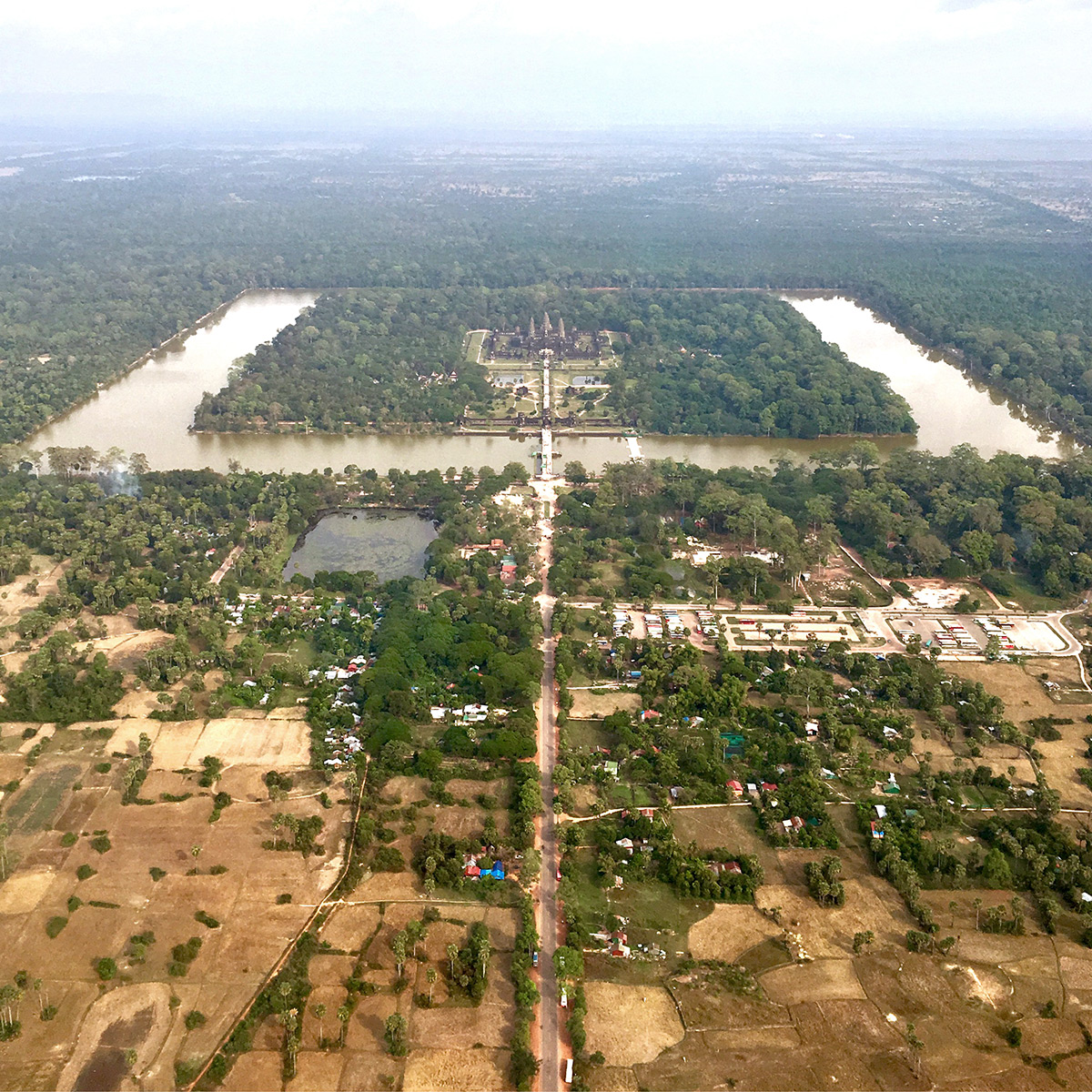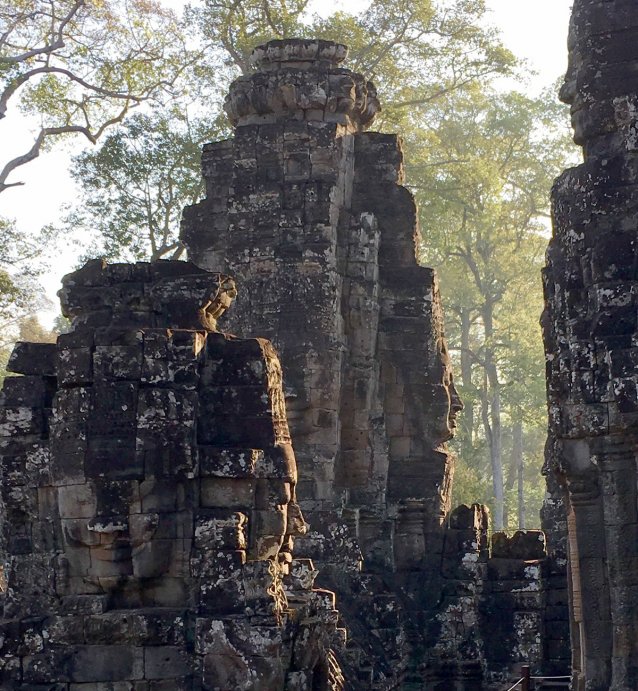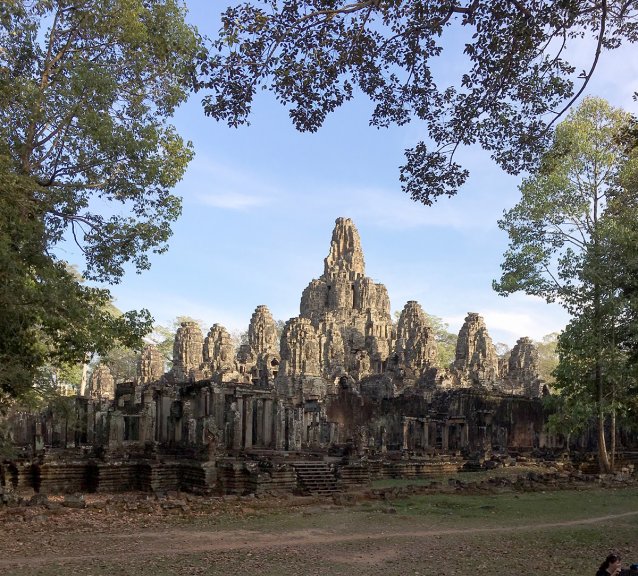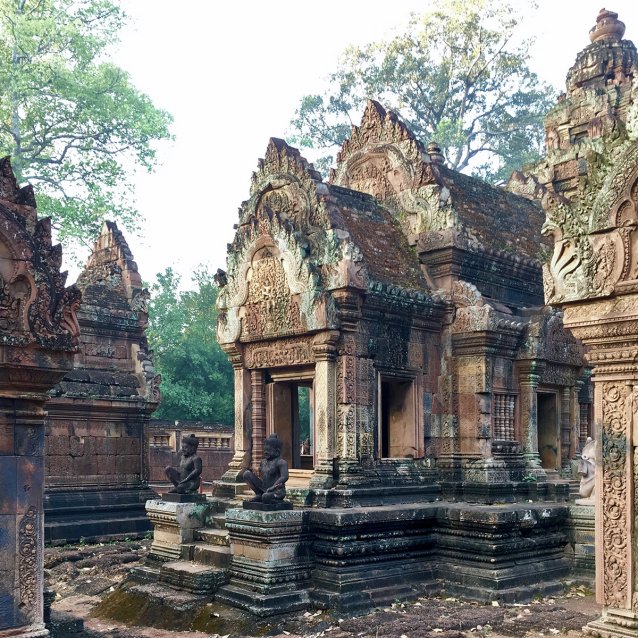Nothing quite prepares the first-time visitor to Cambodia for the scale and grandeur of the monuments of the ancient Khmer civilisation of Angkor—certainly the largest pre-industrial city on earth. The enclosure of Angkor Wat, for example, is five times larger than the Vatican City. Its moat measures more than a kilometre square. Yet the smaller temples, tucked away in the jungle at the end of little dirt roads, tend to be the most beautiful.
Angkor Wat
by Angus Trumble, 2 February 2017
At Ta Prohm (1186 CE), a few kilometres north-northeast of Angkor Wat, not far from the eastern side of Angkor Thom, the devious spung tree, Tretrameles nudiflora, a type of giant fig, has self-sewn on top and, at first sending down tiny roots, has over hundreds of years turned itself into the armature of what remains of the temple. All overgrown and jungly, Ta Prohm is surrounded by giant mango and rosewood trees, mimosas, cashews and tamarinds. If you get there early enough you can be quite alone, except for the chattering monkeys and gibbons, whose outrageous love cries echo through the jungle.
King Jayavarman VII built Ta Prohm in honour of his mother. That great sovereign, whose serene face, synonymous with that of the Buddha, is impressed into the sculpture and architecture of all forty-nine towers of the Temple of Bayon, instituted a program of building no fewer than 102 hospitals.
According to exceedingly elegant Khmer inscriptions in Sanskrit, these were resourced to the tune of 11,192 tons of rice from 838 villages with populations adding up to nearly 82,000 people; 2,124 kilograms of sesame; 105 kilograms of cardamom; 3,402 nutmegs and 1,960 boxes of salve for haemorrhoids. No doubt the result of sitting for too long on stone steps and benches, or on the ground. Each hospital was to be staffed by two doctors for each of the four castes, three nurses, and four “workers,” among whom were (depending on the establishment) cooks, storekeepers, astronomers, soothsayers and general dog’s bodies. (Soothsayers still ply a very healthy trade in modern Cambodia.) Medicines included certain fish, camphor, cinnamon, cumin, fennel, ginger, honey, musk, oregano, senna, sugar, sandalwood, turpentine, vetiver and vinegar. Barely nineteen years later, 10,000 miles away at Runnymede, those grubby old barons scrounged Magna Carta from King John. At Angkor medieval England feels like something out of the Flintstones.
The most aesthetically uplifting experience of the week was a dawn visit to Banteay Srei (967), a gem of a small temple complex in soft pink sandstone some 37 kilometres north-northwest of Siem Reap, relatively close to the smaller of two long dormant volcanoes that unexpectedly rise out of the plain farther east. Until the early 1990s this was Khmer Rouge territory.
I don’t think I have ever seen a suite of more consistently beautiful carvings than the ornament at Banteay Srei. Where in many places serpentine forms change direction, the point at which this occurs gives rise to a remarkable articulation in the ornament. It is almost as if, without this, the sculptural rhythms carried along that line would sag under their own weight. Later monuments acknowledge a similar need, but rely instead on slapping a rosette over the equivalent spot. Not the same thing, not the same thing at all. Eventually the convention was dropped or forgotten, so post-Angkorian twists and turns feel like so many flabby pork sausages. I shall certainly go back, for there are many more monuments to see.
Related information



The Gallery
Visit us, learn with us, support us or work with us! Here’s a range of information about planning your visit, our history and more!



Support your Portrait Gallery
We depend on your support to keep creating our programs, exhibitions, publications and building the amazing portrait collection!



Plan your visit
Information on location, accessibility and amenities.










